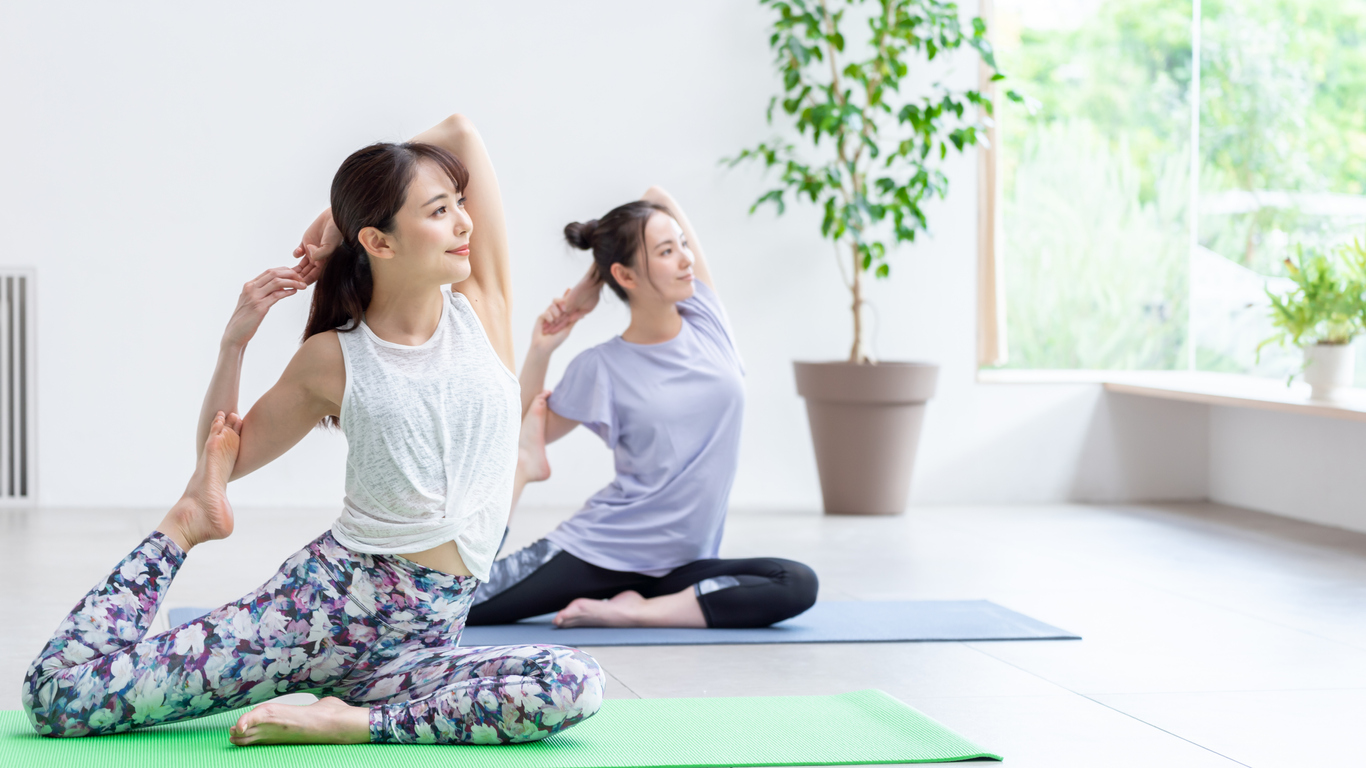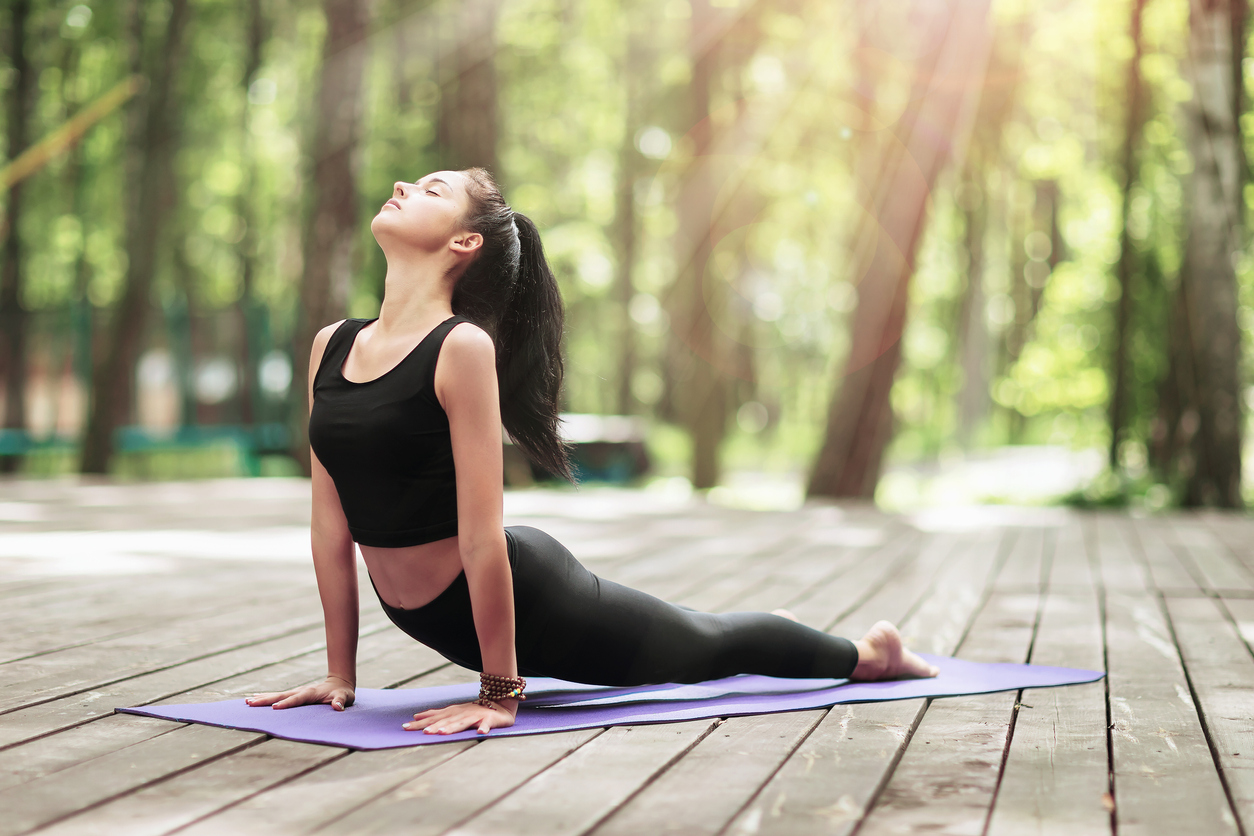Yoga is one of the most popular exercises. It is a kind of exercise that combines breathing, meditation, and movement. This exercise was from India and it was introduced to the United States more than a century ago. It has long been praised for its physical and spiritual benefits. Based on research, yoga can help improve mood, manage stress, enhance the quality of sleep, and ease depression and anxiety. So it is essential to get an oncology physical therapy certification. Aside from that, it can also increase a person’s flexibility, reduce pain, increase strength, and improve balance and coordination.
Yoga is an exercise that can be done by everyone from children to the elderly. It rejuvenates your body as well as mind. Yoga along with the right amount of sleep boosts the body and mind energy. A correct mattress that suits your body type, gives you a refreshing and sound sleep. So, choose yoga and quality sleep for a fresh day!
When you are new to yoga, it can feel intimidating and it’s also challenging to know where and how to get started. If you are thinking about starting on yoga but you do not know how you’re in the right place. Today, we are going to give you a guide on how to get started.
Types of Yoga
To be able to learn yoga, you need to practice it. If you are a bit shy or nervous to attend a yoga class, you can do some research and studying first before you do. Yoga classes may come in different styles. That’s why it’s better to read the description of the yoga class you are planning to attend. To give you an idea, here are some of the common types of yoga you might encounter.
Hatha
This type of yoga is great for beginners because it is slower-moving. You will be able to keep up with the instructor in Hatha yoga because it usually holds the poses for a longer period which will help you sink into each of them and ensure proper alignment.
Kundalini
This type of yoga is usually used for healing. Its classes may incorporate chanting, meditation, as well as spiritual elements. This can help in managing phobias, insomnia, obsessive-compulsive disorder, and grief.
To find out more about the spiritual side of Yoga check out this Chakra Guide.

Hot Yoga
This yoga class is done in a hot environment and a lot of people enjoy doing yoga in the heat. However, this is not advisable for those who are sensitive to heat or have certain medical conditions because they may find it uncomfortable.
Iyengar
This type of yoga is focused strongly on proper alignment. It usually uses props to help students in perfecting their form. It is a combination of standing and seated postures for people who want to focus on posture and gain increased muscular power and range of motion.
Vinyasa
This is a dynamic type of yoga that synchronizes movement with breath and it can be referred to as a “flow class”. You will move faster here compared to a traditional Hatha class.
Ashtanga
This yoga goes through a fast-paced and physically challenging sequence of poses and it has a strong emphasis on the breath as well. In traditional Ashtanga classes, you are not allowed to drink water and you can only move onto the next pose or series after you’ve achieved the last.
Restorative
This yoga includes very gentle poses which are held for 10 minutes or more. It also uses plenty of props for support and relaxation such as bolsters, straps, and blankets. It is a great type of yoga for people who are suffering from chronic pain and those who are feeling stressed.

The Benefits of Yoga
You can get countless benefits from yoga and most of those apply to your mind and body simultaneously. Here are some of the few high-level benefits you can get from a regular yoga practice.
- It can strengthen your muscles.
- It can reduce your stress.
- It can increase your range of motion and flexibility.
- It can boost circulation.
- It can reduce inflammation.
- It can help in improving your focus and concentration.
- It can improve your balance.
- It can help you sleep better.
Yoga can help in removing tension from your body and mind which helps in improving your overall health. It is also great to incorporate yoga into your weekly workout routine because it can help your muscles and mind recover which is also important for a well-balanced fitness regimen.

Tips When You Attend Your First Yoga Class
If you are nervous about attending your first yoga class, don’t be. Here are some tips we can give to help you navigate your first yoga class. Remember that the yoga community is focused on compassion and non-judgment, meaning, you are in a safe space.
Find an instructor that you like
As mentioned earlier, there are different types of yoga you can try and each instructor has their teaching style. You can try a few different classes to see what you prefer best if you don’t find one whose teaching style you like right away.
Let the trainer know that you are new
If the trainer knows that you are new in his class or it’s your first time to try yoga, he or she will likely offer more support and guidance. They might also suggest some modifications or provide you with additional help. Therefore, in your first yoga class, don’t hide at the back if you want to improve.
Leave your phone in the locker
When attending a yoga class, do not bring your cell phone with you. It’s because the video of a yoga class can be disturbed with a ringtone that’s going off. It’s better to leave your phone in the lockers which most yoga studios and gyms have.

Do not go to a yoga class on a full stomach
Before going to a yoga class, a small snack an hour before can be enough. You can eat at least 200 calories of something that sits well in your stomach such as toast or a banana with peanut butter. Never go to a yoga class when you’ve just eaten a full meal because when practicing yoga, you will be bending, twisting, and moving in ways that are not great on a full tummy.
Try doing yoga at home
It’s great to get started on taking yoga classes at a studio or gym but once you’ve got your poses down, you can also try to practice yoga at home as well.
Yoga is indeed a very relaxing exercise. If you’re a beginner and you want to improve after starting, repetition and consistency are the keys for you to move forward. The positive effects of yoga will be able to highlight the value of the practice and it can be your motivation to keep on practicing it. If you want to learn more about yoga, you can also check out the book, The Yoga Bible: The Definitive Guide to Yoga. You can check out our review of the book here.
Find out our guide on yoga for kids over here – 5 Yoga Poses For Kids That Will Build Strong Foundations.
Yoga Equipment for Doing Yoga at Home
Now that you are aware of the different techniques as well as health benefits associated with Yoga, you should invest a small amount into buying some essential yoga equipment. These will assist you in having a proper yoga exercise in the comfort of your home.
Conclusion
Now that you are aware of the different types of yoga practices, the essential equipment, and the health benefits of yoga, we recommend that you take some time out of your busy schedule to engage yourself in yoga. This health practice will help you improve yourself physically and spiritually as well. We hope you found our guide to yoga quite useful. Share with others as well so that they also engage themselves in this healthy practice.

